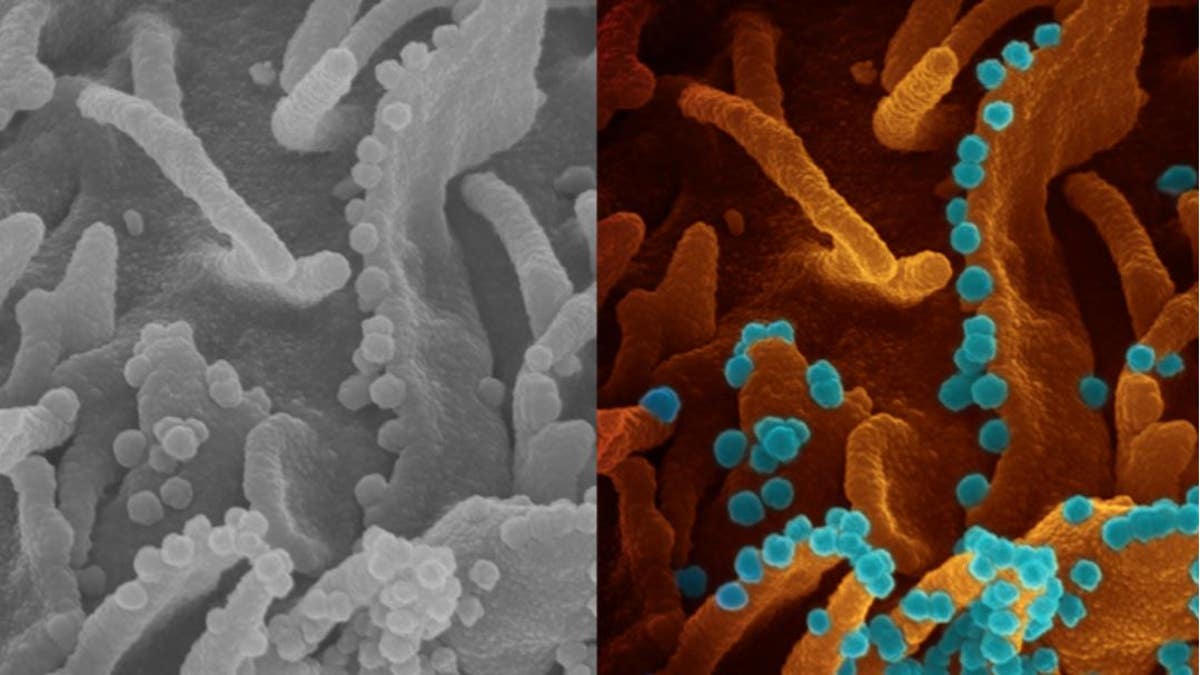Fox News Flash top headlines for April 28
Fox News Flash top headlines are here. Check out what's clicking on Foxnews.com.
Get all the latest news on coronavirus and more delivered daily to your inbox. Sign up here.
One trait that makes SARS-CoV-2, or the novel coronavirus, scary is the fact that it's very good at taking over a host's cellular machinery for its own purpose.
The high-resolution image below, captured by Elizabeth Fischer, the head of Rocky Mountain Laboratory’s (RML's) Electron Microscopy Unit, was taken with a classic scanning electron microscope. Fischer has also captured visuals of the coronavirus that causes Middle East Respiratory Syndrome (MERS).
CORONAVIRUS LINGERS IN THE AIR OF CROWDED SPACES, STUDY FINDS

SARS-CoV-2, the novel coronavirus, is seen above. (Rocky Mountain Laboratories, National Institute of Allergy and Infectious Diseases, Hamilton, MT)
SCIENTISTS REVEAL THE BEST MATERIALS FOR MAKING YOUR OWN MASK
Those orange-brown folds and squiggles are part of a single cell's surface that has been infected with SARS-CoV-2, or COVID-19.
The SARS-CoV-2 particles are the small, blue spheres emerging from the cell surface.
According to the National Institutes of Health (NIH), the image depicts a process known as "viral shedding" whereby viral particles are released from a dying cell.
"This image gives us a window into how devastatingly effective SARS-CoV-2 appears to be at co-opting a host’s cellular machinery: just one infected cell is capable of releasing thousands of new virus particles that can, in turn, be transmitted to others," Francis Collins of the NIH wrote in a blog post.
These types of detailed images help scientists further their understanding of the deadly virus, which has infected more than 3 million people worldwide, including 1 million people in the United States.
80 PERCENT OF WORKERS WOULD NOT FEEL SAFE IF THEIR STATE REOPENED, SURVEY REVEALS
"By capturing many shots of the coronavirus using the arsenal of microscopes available at RML and elsewhere, researchers are learning more every day about how SARS-CoV-2 enters a cell, moves inside it, and then emerges to infect other cells," Collins added.

